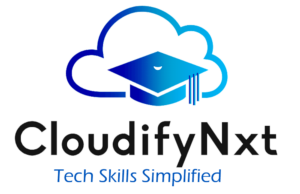
Prerequisite to Learn Data Science
Introduction
Are you excited about diving into data science but unsure where to start? Data science is an exciting field that blends mathematics, programming, and analytical skills to uncover valuable insights from data. To set yourself up for success, it’s helpful to have a few foundational skills in place. Ready to find out what you need? Let’s break it down in an engaging and easy-to-follow way!
What You Need to Know Before Starting Data Science
- Brush Up on Math and Statistics
- Math Fundamentals: You don’t need to be a math wizard, but a good grasp of algebra and calculus will come in handy. These areas of math help you understand how algorithms work and solve data-related problems.
- Statistics Basics: Statistics is the language of data science. Get comfortable with concepts like averages, variances, probability distributions, and significance testing. These tools are key to making sense of data and drawing meaningful conclusions.
- Get Coding
- Learn Python or R: Python is the go-to language for most data scientists because it’s easy to learn and has powerful libraries like Pandas and NumPy. R is another popular choice, especially if you’re focused on statistics. Pick one and get coding!
- Practice Coding Skills: Start with simple scripts and gradually move on to more complex projects. Coding is essential for data manipulation, analysis, and automation in data science.
- Understand Basic Data Handling
- Data Structures: Learn how to work with data structures like lists, arrays, and data frames. These structures are used to organize and manage data efficiently.
- Data Cleaning: Raw data often needs cleaning before analysis. Familiarize yourself with techniques for handling missing values, duplicates, and data formatting issues.
- Get to Know Data Visualization
- Visualization Tools: Data visualization is key to communicating your findings. Start with tools like Matplotlib and Seaborn in Python, or ggplot2 in R. These tools help you create charts, graphs, and plots that make your data come to life.
- Design Principles: Learn the basics of good data visualization design, including how to choose the right chart type and how to present your data clearly and effectively.
- Explore Machine Learning Basics
- Introduction to Machine Learning: Understanding basic machine learning concepts like supervised vs. unsupervised learning, classification, and regression will be helpful. These concepts form the foundation for building predictive models.
- ML Libraries: Get familiar with libraries like Scikit-learn in Python. These libraries offer pre-built algorithms that can help you get started with machine learning.
- Learn About Databases and SQL
- SQL Basics: SQL (Structured Query Language) is essential for retrieving and managing data stored in databases. Learn how to write basic queries to select, filter, and aggregate data.
- Database Knowledge: Understanding how databases work and how to interact with them will help you access and manipulate the data you need for analysis.
- Develop Analytical Thinking
- Problem-Solving Skills: Data science involves a lot of problem-solving. Cultivate a mindset for tackling complex questions and finding insights from data.
- Critical Thinking: Learn to question your assumptions and validate your findings. Being able to critically evaluate data and results is crucial for making informed decisions.
- Stay Curious and Keep Learning
- Continuous Learning: The field of data science is always evolving. Stay curious and keep up with the latest tools, techniques, and trends. Online courses, webinars, and data science communities can be great resources.
- Hands-On Practice: Apply what you learn through projects, challenges, and real-world datasets. The more you practice, the more you’ll understand and master the skills.
How to Prepare for Data Science
- Strengthen Your Math and Statistics Knowledge: Review key concepts and practice problems.
- Learn a Programming Language: Start with Python or R and build your coding skills.
- Practice Data Handling: Get comfortable with data structures and cleaning techniques.
- Explore Data Visualization: Learn to use visualization tools and principles.
- Understand Machine Learning Basics: Familiarize yourself with core concepts and libraries.
- Learn SQL and Database Management: Practice writing SQL queries and interacting with databases.
- Develop Analytical and Critical Thinking: Work on problem-solving and evaluating data.
- Stay Engaged and Keep Practicing: Continue learning and applying your skills through projects.
